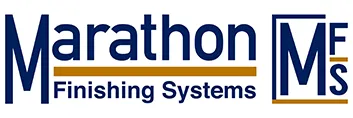Realizing your spray booth doesn’t meet code? That’s a tough spot to be in, and you’re not alone. Whether it came up during an inspection or just caught your eye during routine work, finding safety gaps in your setup can be overwhelming. The key is not to panic. There’s a smart, straightforward way to fix the issues and keep your team and facility safe.
This guide breaks it down step by step, so you know what to look for, what to fix, and how to stay compliant going forward.
What You’ll Learn in This Blog:
- What “code compliant” really means (NFPA 33, OSHA, and local requirements)
- How to assess your spray booth for safety gaps
- The most common violations that trip people up
- Fixes that actually work, from small changes to big upgrades
- Why training your crew matters more than you might think
- How to stay compliant over the long haul
- When it’s time to call in expert help
What Does “Code Compliant” Even Mean?
If you’re in charge of a spray booth, you’ve probably heard terms like NFPA 33 or OSHA standards thrown around. But what does being “code compliant” actually involve?
In simple terms: your spray booth needs to meet all required safety standards for fire protection, airflow, electrical safety, and structure. That includes:
- NFPA 33 – This covers safety rules for spray operations using flammable or combustible materials.
- OSHA – These are the federal worker safety rules your team needs to follow.
- Local Codes – Your city or county might have added requirements on top of NFPA and OSHA.
If your booth falls short in any of these areas, you’re not just risking fines or downtime, you’re risking real hazards like fire or toxic exposure.
Step 1: Do a Proper Safety Inspection
This is where it all starts. Don’t guess. Don’t assume. Bring in someone who knows what they’re doing, like a fire protection engineer or a qualified spray booth technician. They’ll walk through everything with a trained eye and identify what’s up to standard… and what isn’t.
They’ll likely check things like:
- Airflow rate and ventilation setup
- Filter condition and maintenance records
- Explosion-proof electrical components
- Static grounding and electrical bonding
- Fire suppression systems
- The booth’s construction materials and layout
Even if something seems small, like an old filter or loose wiring, it might point to a bigger problem underneath. That’s why a full inspection is worth it.
Step 2: Sort the Problems by Risk
Once you’ve got the inspection report, start breaking it down:
- Critical Issues – Things like bad airflow, faulty electrical, or no fire suppression. These need attention ASAP.
- Major Issues – Maybe your wiring’s not rated correctly or your filters don’t meet spec.
- Minor Issues – Labeling problems, missing documentation, that sort of thing.
Focus on fixing the biggest safety risks first, the ones that could shut you down or cause serious harm.
Step 3: Create a Realistic Action Plan
Now that you know what’s wrong, it’s time to build a plan that makes sense. For each item on your list, figure out:
- What needs to be fixed
- Who’s going to handle it
- What materials or contractors you’ll need
- Whether any permits or certifications are involved
- How long it’ll take (realistically)
Some fixes might be pretty simple, like upgrading a fan or installing a pressure gauge. Others, like adding a fire suppression system or bringing in ETL-listed components, may require a full retrofit.
Either way, the key is having a clear path forward.
Step 4: Start Fixing the Issues
Once your plan’s in place, get to work. Common corrective steps might include:
- Replacing outdated exhaust fans to improve airflow
- Swapping out unsafe electrical components for explosion-proof options
- Installing or upgrading your fire suppression system
- Replacing filters and adding manometers to monitor pressure
- Adjusting the booth’s layout or construction to meet code
If it starts to feel like more than your crew can handle, don’t be afraid to bring in help. Retrofitting spray booths is what companies like Marathon Finishing Systems do every day.
Step 5: Train Your People
Even the best booth in the world can’t prevent accidents if your team isn’t using it properly. Make sure every employee knows:
- How to use the booth safely
- What to do in case of fire or ventilation failure
- When and how to change filters
- The basics of OSHA and NFPA 33 rules
Training isn’t a “nice to have”, OSHA requires it. And more importantly, it keeps your team safe and confident on the job.
Step 6: Stay Compliant With Routine Maintenance
Getting up to code is just the beginning the real challenge is staying there. That means setting up routines that keep your booth in shape:
- Daily: Quick visual checks, filters, wiring, airflow indicators
- Monthly: Log maintenance tasks, replace filters, inspect systems
- Annually: Bring in a certified third-party inspector
Sticking to a maintenance plan not only prevents compliance problems — it helps your equipment last longer and perform better.
Final Thoughts: Take Action, Stay Safe
If your booth isn’t code compliant, don’t ignore it. You’ve got people relying on you, and no one wants to see your shop shut down over something that could’ve been fixed.
With the right inspection, a clear plan, and some focused follow-through, you can bring your booth up to code and keep it there. And if you ever feel in over your head, remember: you don’t have to solve it alone.
Need Help Getting Your Booth Back on Track?
At Marathon Finishing Systems, we help businesses bring their spray booths up to code every day. Whether you need a fresh inspection, a retrofit, or a full system replacement, we’re here to help.
Reach out to our team and let’s talk about the best way to move forward.
